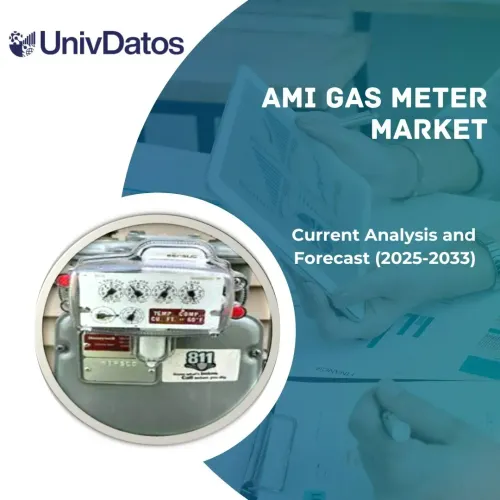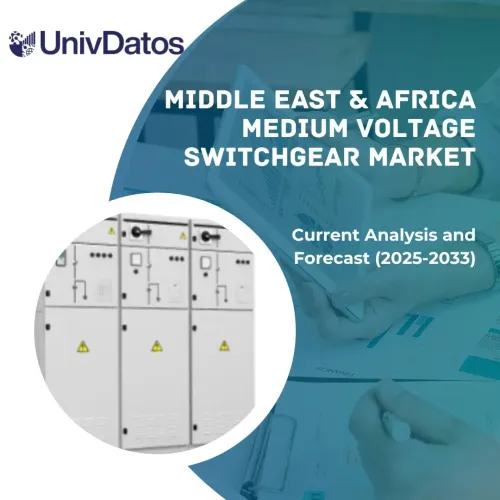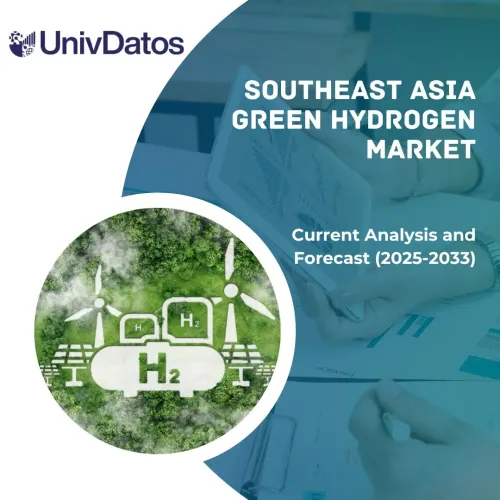- Inicio
- Acerca de nosotros
- Industria
- Servicios
- Leyendo
- Contáctenos
Mercado de microrredes de Asia Pacífico: Análisis actual y pronóstico (2024-2032)
Énfasis en el Componente (Software y Servicios y Hardware); Tipo (AC, DC, e Híbrido); Conectividad (Conectado a la Red y Fuera de la Red); Fuente de Energía (Calor y Energía Combinados, Gas Natural, Diésel, Solar FV, Pila de Combustible, y Otros); Almacenamiento (microrred de Iones de Litio, Ácido de Plomo, Baterías de Flujo, Volantes de Inercia, y Otros); Aplicación (Atención Médica, Instituciones Educativas, Militar, Servicios Públicos, Industrial/Comercial, Remoto, y Otros) y País
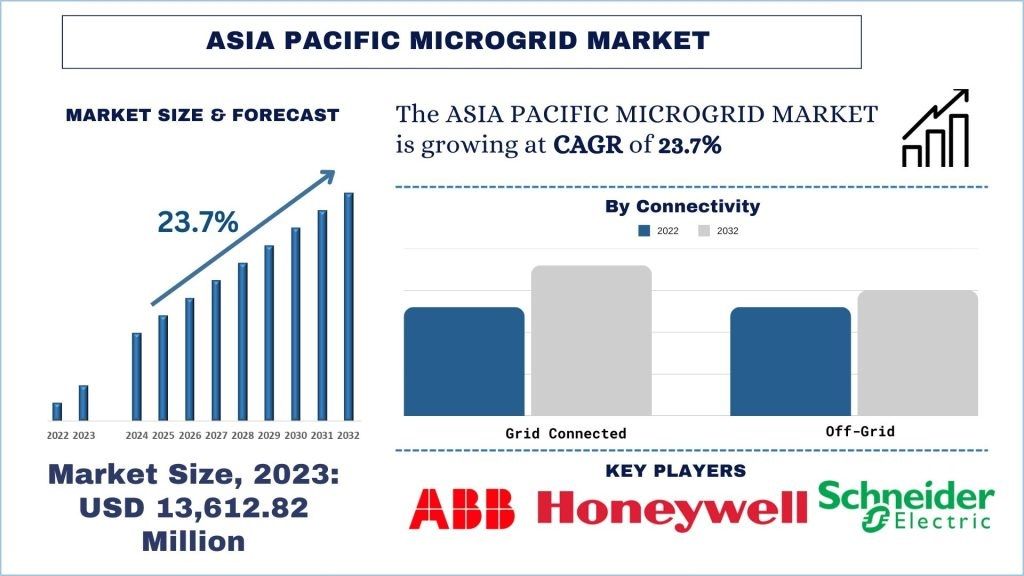
Tamaño y previsión del mercado de microrredes de Asia Pacífico
El mercado de microrredes de Asia Pacífico se valoró en 13.612,82 millones de USD y se espera que crezca a una sólida CAGR de alrededor del 23,7% durante el período de previsión (2024-2032) debido a la creciente demanda de energía limpia en la región y al creciente apoyo gubernamental para la adopción de microrredes para proporcionar energía en las zonas rurales.
Análisis del mercado de microrredes de Asia Pacífico
El mercado de microrredes está experimentando un rápido crecimiento en toda Asia, ya que los países buscan impulsar el suministro de energía resistente e integrar más fuentes de energía renovables. Muchas naciones de Asia Pacífico, como India, China e Indonesia, están experimentando una creciente demanda de electricidad debido a la industrialización y la urbanización. Al mismo tiempo, las condiciones climáticas extremas están estresando las redes de servicios públicos que se están envejeciendo. Además, varios países han establecido políticas favorables, mandatos, subsidios y otras iniciativas para impulsar las inversiones en microrredes para la integración de energías renovables, el acceso a la energía y la resiliencia. Por ejemplo, India tiene una Iniciativa de Microrredes para Campus y Oportunidades Rurales para apoyar 10.000 microrredes. Además, en 2022, Solaren Sustainable Energies encargó una de las microrredes renovables más grandes del Sudeste Asiático, un sistema solar más almacenamiento de 7 MW en Compostela Valley, Filipinas, que da servicio a más de 20.000 hogares. Con los crecientes impulsores y el apoyo de las partes interesadas, las microrredes están preparadas para desempeñar un papel cada vez más vital en la transformación de los sistemas energéticos en esta región fundamental.
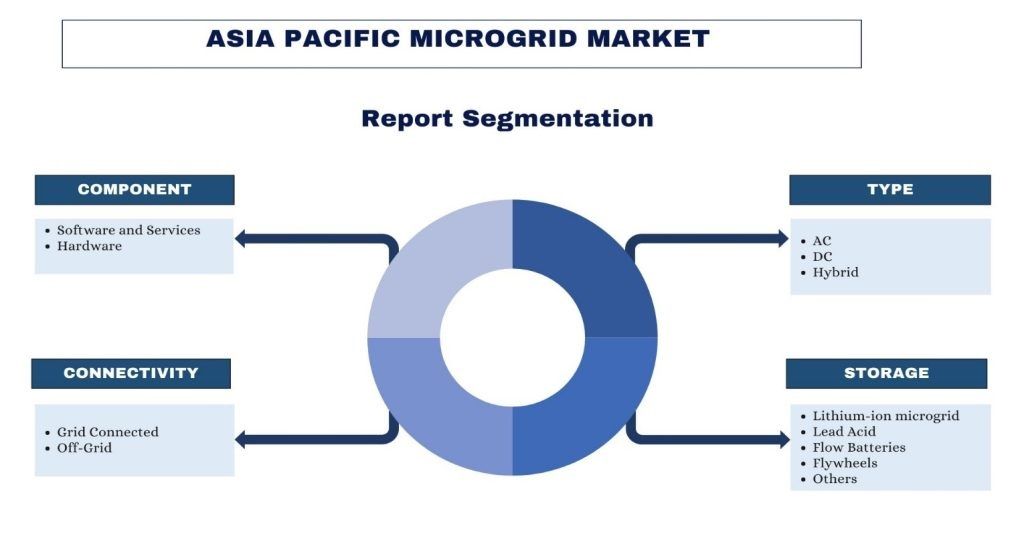
Tendencias del mercado de microrredes de Asia Pacífico
Creciente apoyo gubernamental
La destacada tendencia del apoyo gubernamental a las microrredes en Asia Pacífico, especialmente después de 2021, es un acontecimiento importante destinado a promover sistemas energéticos resilientes y sostenibles. Las microrredes son sistemas energéticos localizados que pueden operar independientemente de la red principal, integrando diversos recursos energéticos distribuidos, como fuentes de energía renovables, sistemas de almacenamiento de energía y cargas controlables. Ofrecen mayor fiabilidad, resiliencia y posibles ahorros de costes al reducir la dependencia de la red centralizada tradicional. El apoyo gubernamental a las microrredes ha ido ganando impulso en Asia Pacífico, impulsado por factores como la necesidad de una infraestructura energética fiable y resiliente, la transición hacia fuentes de energía más limpias y los posibles beneficios económicos de la producción local de energía.
- En 2022, el gobierno indio anunció planes para instalar microrredes en zonas rurales con el fin de abordar los retos del acceso a la electricidad y promover soluciones de energía limpia.
- El sexto Plan Estratégico de Energía de Japón, publicado en octubre de 2021, fijó el objetivo de que las energías renovables representen el 36-38% de la combinación energética de Japón para 2030.
- En diciembre de 2022, el país anunció su plan de reiniciar las centrales nucleares para ayudar a hacer frente a su escasez de energía y perseguir un desarrollo con bajas emisiones de carbono.
China dominó el mercado de microrredes de Asia Pacífico.
Dentro de Asia Pacífico, China posee una parte importante del mercado. Los principales factores que impulsan el crecimiento del mercado son la creciente demanda de energía limpia en la región, el aumento de las ventas de vehículos eléctricos y la gran inversión realizada por el gobierno y los agentes privados. Además, los avances tecnológicos en el sector de las microrredes han hecho avanzar al mercado en el futuro previsible.
El mercado de microrredes de Asia Pacífico está valorado en 13.612,82 millones en 2023 y se espera que alcance los 86.752,74 millones con una CAGR del 23,7. China está promoviendo, desarrollando y desplegando activamente microrredes para mejorar la seguridad energética, aumentar la utilización de energías renovables y reducir las emisiones de carbono. En 2023, el sector de la energía limpia de China, que incluye fuentes de energía renovables como la solar, la eólica, la hidroeléctrica, etc., contribuyó con un 9,0% estimado al PIB del país, frente al 7,2% en 2022. Además, el gobierno chino ha puesto en marcha el "Programa Nacional de Demostración de Microrredes de Energías Renovables" para promover la construcción de microrredes en zonas remotas y rurales, y el programa "Nueva Infraestructura", que forma parte del 14º Plan Quinquenal de China, hace hincapié en el desarrollo de microrredes y sistemas energéticos integrados. Los principales centros de fabricación, como las provincias de Guangdong, Jiangsu y Zhejiang, están liderando la instalación de capacidad de energía solar y eólica, lo que indica un alto uso de energías renovables en las actividades industriales.
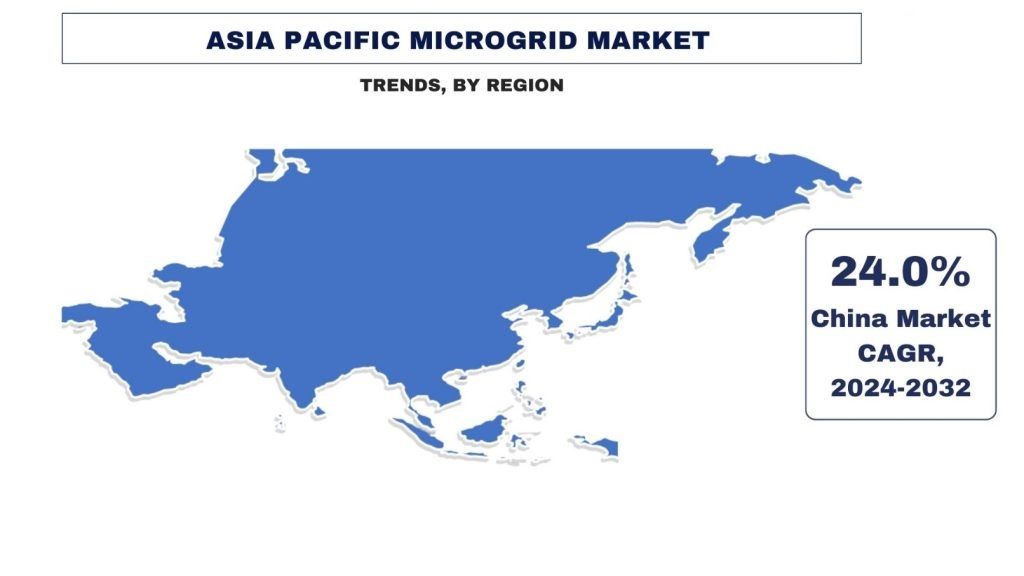
Panorama del sector de las microrredes de Asia Pacífico
El mercado de las microrredes es competitivo y está concentrado, con la presencia de muy pocos actores del mercado de Asia Pacífico e internacionales. Los principales actores están adoptando diferentes estrategias de crecimiento para mejorar su presencia en el mercado, como asociaciones, acuerdos, colaboraciones, lanzamientos de nuevos productos, expansiones geográficas y fusiones y adquisiciones. Algunos de los principales actores que operan en el mercado son ABB, General Electric, Siemens AG, Eaton Corporation Inc., Schneider Electric SE, Honeywell International Inc., Caterpillar, Toshiba Corporation, Hitachi Energy Ltd y General Microgrids.
Noticias del mercado de microrredes de Asia Pacífico
- El gobierno chino ha puesto en marcha el "Programa Nacional de Demostración de Microrredes de Energías Renovables" para promover la construcción de microrredes en zonas remotas y rurales, y el programa "Nueva Infraestructura", que forma parte del 14º Plan Quinquenal de China, hace hincapié en el desarrollo de microrredes y sistemas energéticos integrados.
- En 2022, Tata Power y el Banco de Desarrollo de las Pequeñas Industrias de la India (SIDBI) unieron sus fuerzas para lanzar un innovador programa que verá el establecimiento de 1.000 empresas de energía verde en toda la nación. Esta iniciativa apoyará la visión del Gobierno de la India de Atmanirbhar Bharat fomentando modelos empresariales sostenibles en toda la nación, lo que conducirá al empoderamiento de los empresarios rurales.
- En septiembre de 2023, NHOA Energy, una filial de NHOA Group especializada en soluciones de almacenamiento de energía, completó eficazmente la instalación de un sistema de almacenamiento de energía de 107 MWh para Taiwan Cement Group ("TCC Group") en la planta de Yingde, en la provincia china de Guangdong.
Cobertura del informe del mercado de microrredes de Asia Pacífico
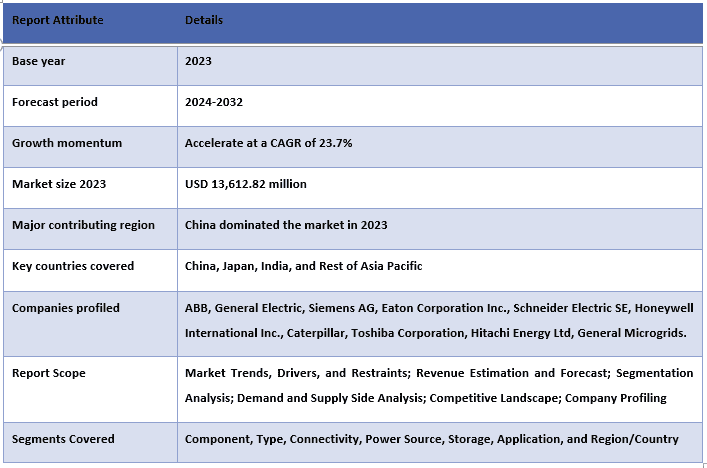
Razones para comprar este informe:
- El estudio incluye el análisis del tamaño del mercado y la previsión validado por expertos clave autenticados de la industria.
- El informe revisa brevemente el rendimiento general de la industria de un vistazo.
- El informe cubre un análisis en profundidad de los pares prominentes de la industria, centrándose principalmente en las finanzas clave del negocio, las carteras de productos, las estrategias de expansión y los desarrollos recientes.
- Examen detallado de los impulsores, las restricciones, las tendencias clave y las oportunidades que prevalecen en la industria.
- El estudio cubre exhaustivamente el mercado a través de diferentes segmentos.
- Análisis a fondo a nivel regional de la industria.
Opciones de personalización:
El mercado de microrredes de Asia Pacífico se puede personalizar según los requisitos o cualquier otro segmento de mercado. Además de esto, UMI entiende que usted puede tener sus propias necesidades de negocio; por lo tanto, no dude en ponerse en contacto con nosotros para obtener un informe que se adapte completamente a sus necesidades.
Tabla de contenido
Metodología de investigación para el análisis del mercado de microrredes de Asia Pacífico (2024-2032)
El análisis del mercado histórico, la estimación del mercado actual y la previsión del mercado futuro del mercado de microrredes de Asia Pacífico fueron los tres pasos principales realizados para crear y analizar la adopción de microrredes en los principales países. Se llevó a cabo una exhaustiva investigación secundaria para recopilar las cifras históricas del mercado y estimar el tamaño actual del mercado. En segundo lugar, se tomaron en consideración numerosos hallazgos y supuestos para validar estas perspectivas. Además, también se realizaron exhaustivas entrevistas primarias con expertos de la industria en toda la cadena de valor del mercado de microrredes de Asia Pacífico. Tras la suposición y validación de las cifras del mercado a través de entrevistas primarias, empleamos un enfoque de arriba hacia abajo/de abajo hacia arriba para pronosticar el tamaño completo del mercado. Posteriormente, se adoptaron métodos de desglose del mercado y triangulación de datos para estimar y analizar el tamaño del mercado de los segmentos y subsegmentos de la industria. La metodología detallada se explica a continuación:
Análisis del tamaño histórico del mercado
Paso 1: Estudio en profundidad de fuentes secundarias:
Se llevó a cabo un estudio secundario detallado para obtener el tamaño histórico del mercado de microrredes a través de fuentes internas de la empresa, como informes anuales y estados financieros, presentaciones de resultados, comunicados de prensa, etc., y fuentes externas, como revistas, noticias y artículos, publicaciones gubernamentales, publicaciones de la competencia, informes del sector, bases de datos de terceros y otras publicaciones creíbles.
Paso 2: Segmentación del mercado:
Después de obtener el tamaño histórico del mercado de microrredes, realizamos un análisis secundario detallado para recopilar información histórica del mercado y compartirla para diferentes segmentos y subsegmentos de las principales regiones. El informe incluye los principales segmentos: componentes, conectividad, tipo, fuente de energía, almacenamiento y aplicación. Además, se llevaron a cabo análisis a nivel de país para evaluar la adopción general de modelos de prueba en esa región.
Paso 3: Análisis de factores:
Después de adquirir el tamaño histórico del mercado de diferentes segmentos y subsegmentos, realizamos un análisis de factores detallado para estimar el tamaño actual del mercado de microrredes. Además, realizamos un análisis de factores utilizando variables dependientes e independientes, como el componente, la conectividad, el tipo, la fuente de energía, el almacenamiento y la aplicación del mercado de microrredes. Se llevó a cabo un estudio exhaustivo de los escenarios de demanda y oferta teniendo en cuenta las principales asociaciones, fusiones y adquisiciones, la expansión empresarial y los lanzamientos de productos en el mercado de microrredes de Asia Pacífico.
Estimación y previsión del tamaño actual del mercado
Tamaño actual del mercado: Basándonos en la información práctica de los 3 pasos anteriores, llegamos al tamaño actual del mercado, los actores clave en el mercado de microrredes de Asia Pacífico y las cuotas de mercado de los segmentos. Todos los porcentajes de participación dividida y los desgloses del mercado necesarios se determinaron utilizando el enfoque secundario mencionado anteriormente y se verificaron a través de entrevistas primarias.
Estimación y previsión: Para la estimación y previsión del mercado, se asignaron ponderaciones a diferentes factores, incluidos los impulsores y las tendencias, las restricciones y las oportunidades disponibles para las partes interesadas. Después de analizar estos factores, se aplicaron técnicas de previsión relevantes, es decir, el enfoque de arriba hacia abajo/de abajo hacia arriba, para llegar a la previsión del mercado para 2032 para diferentes segmentos y subsegmentos en los principales mercados de Asia Pacífico. La metodología de investigación adoptada para estimar el tamaño del mercado abarca:
- El tamaño del mercado de la industria, en términos de ingresos (USD) y la tasa de adopción del mercado de microrredes en los principales mercados a nivel nacional
- Todos los porcentajes de participación, divisiones y desgloses de los segmentos y subsegmentos del mercado
- Actores clave en el mercado de microrredes de Asia Pacífico en términos de productos ofrecidos. Además, las estrategias de crecimiento adoptadas por estos actores para competir en el mercado de rápido crecimiento.
Validación del tamaño y la cuota de mercado
Investigación primaria: Se realizaron entrevistas en profundidad con los Key Opinion Leaders (KOLs), incluidos los ejecutivos de alto nivel (CXO/VPs, jefe de ventas, jefe de marketing, jefe de operaciones, jefe regional, jefe de país, etc.) en las principales regiones. Los hallazgos de la investigación primaria se resumieron y se realizó un análisis estadístico para probar la hipótesis establecida. La información de la investigación primaria se consolidó con los hallazgos secundarios, convirtiendo así la información en información práctica.
División de los participantes primarios en diferentes regiones
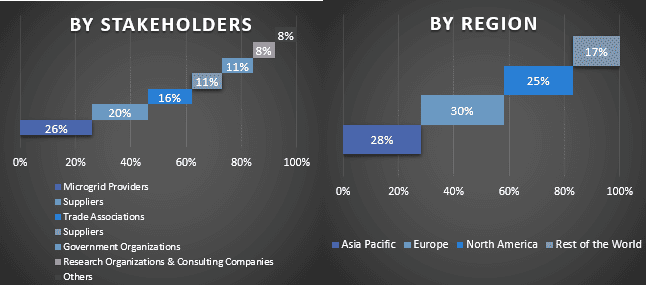
Ingeniería de mercado
Se empleó la técnica de triangulación de datos para completar la estimación general del mercado y llegar a números estadísticos precisos para cada segmento y subsegmento del mercado de microrredes de Asia Pacífico. Los datos se dividieron en varios segmentos y subsegmentos después de estudiar varios parámetros y tendencias en las áreas de componentes, conectividad, tipo, fuente de energía, almacenamiento y aplicación en el mercado de microrredes de Asia Pacífico.
El objetivo principal del estudio del mercado de microrredes de Asia Pacífico
Las tendencias actuales y futuras del mercado de microrredes de Asia Pacífico se señalaron en el estudio. Los inversores pueden obtener información estratégica para basar su criterio de inversión en el análisis cualitativo y cuantitativo realizado en el estudio. Las tendencias actuales y futuras del mercado determinaron el atractivo general del mercado a nivel regional, proporcionando una plataforma para que el participante industrial explote el mercado sin explotar para beneficiarse de una ventaja de ser el primero en actuar. Otros objetivos cuantitativos de los estudios incluyen:
- Analizar el tamaño actual y previsto del mercado de microrredes en términos de valor (USD) y el tamaño actual y previsto del mercado de diferentes segmentos y subsegmentos.
- Los segmentos del estudio incluyen componentes, conectividad, tipo, fuente de energía, almacenamiento y aplicación.
- Definir y analizar el marco regulatorio para la microrred
- Analizar la cadena de valor involucrada con la presencia de varios intermediarios, junto con el análisis de los comportamientos de los clientes y la competencia de la industria.
- Analizar el tamaño actual y previsto del mercado de microrredes para la región principal.
- El informe estudia los principales países y regiones, incluidos China, Japón, India y el resto de Asia Pacífico.
- Perfiles de empresas del mercado de microrredes y las estrategias de crecimiento adoptadas por los participantes del mercado para mantener el mercado de rápido crecimiento.
- Análisis a fondo a nivel regional de la industria
Preguntas frecuentes Preguntas frecuentes
P1: ¿Cuál es el tamaño actual del mercado de microrredes de Asia Pacífico y su potencial de crecimiento?
P2: ¿Cuáles son los factores impulsores del crecimiento del mercado de microrredes?
P3: ¿Qué segmento tiene la mayor cuota del mercado de microrredes por tipo?
P4: ¿Cuáles son las tecnologías emergentes y las tendencias en el mercado de microrredes?
P5: ¿Qué país dominará el mercado de microrredes?
Relacionados Informes
Los clientes que compraron este artículo también compraron

